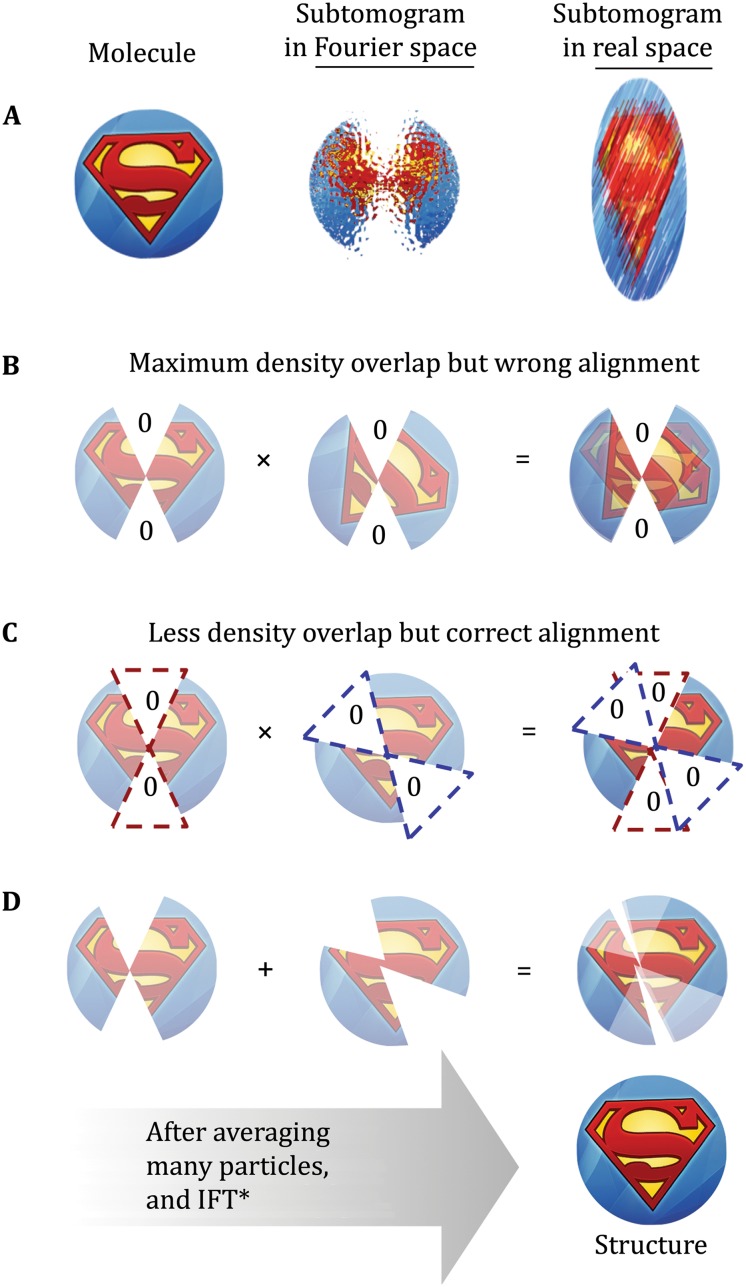Fig. 7.
Missing wedge bias in Fourier space. A Cartoon representation of a molecule to image (left), its representation as a subtomogram in Fourier space after limited-angle tomographic reconstruction (center), and the effects that the “missing wedge” of information due to limited-angle imaging and dose fractionation due to limited tolerable electron dose have on the subtomogram in real space (i.e., individual subtomograms suffer from elongation and high levels of noise). B, C Since the comparison metric most commonly used in SPT is cross correlation, greater density overlap tends to increase the similarity score during alignment. This “missing wedge bias” towards favoring larger density overlaps can cause misalignment of subtomograms; however, it can be compensated for by cross correlation map normalization or other methods. D After averaging many correctly aligned subtomograms in different orientations, the missing wedge can be “filled in”, and the associated elongation artifacts disappear while improving the SNR and the resolution of the macromolecular complex of interest. Note : The Fourier transform of the Superman logo would appear visually as an abstract and somewhat random pattern, in which it would be difficult to discern correct feature overlaps. For this reason, we have represented the image in Fourier space using the real-space image as a proxy to facilitate interpretation of the impact of missing wedge bias

